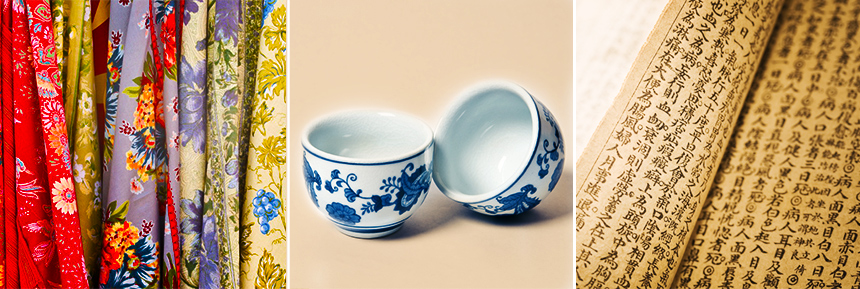
What was traded on the Silk Road? Silk and many other goods were carried from the East to the West and back. Judging by the road’s name silk was the main commodity in the list. Thanks to its light weight, compactness, enormous demand and high price it was ideal for trade and long-distance transportation.
In the Middle Ages the Venetian merchant Marco Polo named the caravan routes silk roads. But it was a German researcher Ferdinand Richthofen who coined the term the Great Silk Road in his fundamental work, “China”, in 1877.
At the initial stage of the Silk Road development Chinese received expensive horses and the seeds of lucerne and grapes. The ancient world had cultivated grapevine and made wines from time immemorial. But for Chinese, separated from other civilizations, grapes were a novelty. Moreover, Chinese envoys were very surprised when they found that it was possible to make wine not only from rice but also from berries unknown to them. Later Chinese discovered for themselves other agricultural crops – string beans, onions, cucumbers, carrots, pomegranates, figs etc.
Various woolen goods, carpets, curtains, blankets and rugs, came to China from Central Asia and East Mediterranean. They made huge impression upon Chinese who were unfamiliar with methods wool and flax processing, carpet manufacture and weaving. Highly appreciated in Ancient China were Parthian tapestries and carpets.
Central Asia exported camels which were very appreciated in China, military equipment, gold and silver, semi-precious stones and glass items. Samarkand made glass was especially valued due to its high quality. It was considered as luxury goods. Other goods were skins, wool, cotton fabrics, gold embroidery, exotic fruits – water-melons, melons and peaches; fat-tailed sheep and hunting dogs, leopards and lions.
From China caravans carried the well-known Chinese china – snow-white vases, bowls, glasses, and dishes with graceful patterns. Only Chinese owned the secret of making the thinnest and resonant porcelain, therefore, it was very expensive in European markets. Bronze ornaments and other products from this metal, ornate bronze mirrors, umbrellas, products from the well-known Chinese varnish, medicines, and perfumery were also popular. Chinese paper, one of the most remarkable inventions of Chinese technical genius, was highly appreciated too. Gold, skins and many other things were exported as well. Merchants also carried tea and rice, woolen and flax fabrics, corals, amber and asbestos. The sacks of merchants were filled with ivory, rhino horns, turtle shells, spices, ceramic and iron items, glaze and cinnamon, ginger, bronze weapons and mirrors.
India was famous for its fabrics, spices and semi-precious stones, dyes, and ivory. Iran – for its silver products. Rome received spices, fragrances, jewels, ivory, and sugar and sent European pictures and luxury goods.
Eastern Europe imported rice, cotton, woolen and silk fabrics from Central Asia and exported considerable volumes of skins, furs, fur animals, bark for skin processing, cattle and slaves to Khoresm. Northern Europe was the source of furs, skins, honey and slaves.

